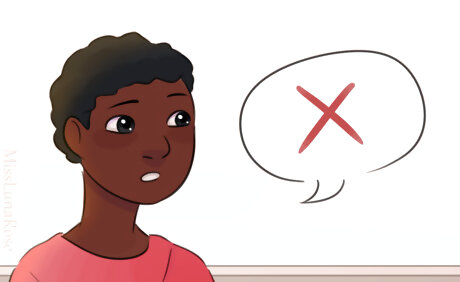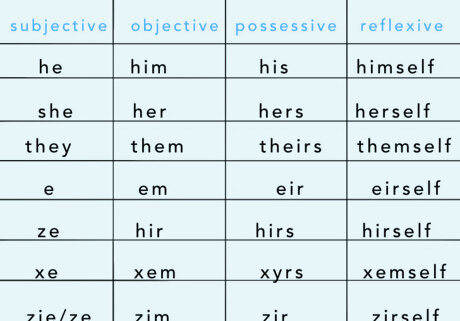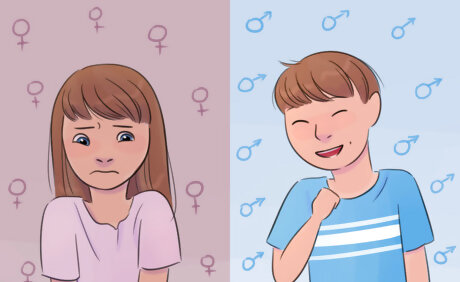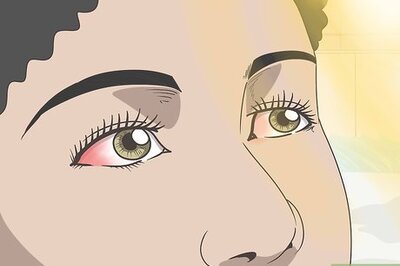
views

Know what "transgender" means. Someone who is transgender was assigned a sex at birth that doesn't match their gender identity. Cisgender people are people whose assigned sex and gender identity match. Most people are cisgender. "'Transgender'" is an adjective, not a noun or a verb. For example, you could say, "she is a transgender teenager." Trans is an adjective short for "transgender." A transgender woman (or trans woman for short) is a woman who was assigned male at birth. A transgender man (or trans man for short) is a man who was assigned female at birth. Refer to people by how they are now, not by what they were mistaken for in the past. If needed, assigned male at birth/assigned female at birth is how you can refer to the sex someone was called when they were born. These can be shortened to "AMAB/AFAB". Some intersex people may describe themselves as "coercively assigned male/female at birth" or "CAMAB/CAFAB". Intersex people have innate sex characteristics (from chromosomes to genitals) that don't match the traditional ideas of male and female. Some intersex people are transgender while others aren't. The opposite of interse intersex is "perisex".

Understand the definition of non-binary. Someone who is non-binary does not identify within the gender binary of male or female. They may or may not consider themselves transgender, but non-binary is under the umbrella term "transgender". Some of these identities include: Agender: lack of a gender Genderfluid: switching between different gender identities and/or gender expressions Bigender: someone who identifies as two genders, usually both female and male Nonbinary: someone who identifies with a gender identity outside of the gender binary Culture-specific genders: two-spirit Native American or First Nations people or Indian Hijras. These are labels to be used only by the people whose cultures include such a gender.

Know which words are outdated or offensive. Some words have stopped being used because they aren't good reflections of what being transgender is truly like. Others have been used hatefully or degradingly. Born a __ and biological sex reduces trans people to their genitals. Say "assigned __ at birth" instead. Male to female (MTF) and Female to male (FTM) are outdated. They also imply someone's gender comes from their genitals. Just say "trans woman" or "trans man." Transgendered and a transgender are grammatically incorrect and rude. Transsexual is outdated and most trans people don't like it. Transtrender implies that someone is pretending to be trans for fun. Sh*male (rhymes with "female") and tr*nny (rhymes with "cranny") are considered slurs. It is also wrong to call a trans person an "it" or say that they are a "trap" trying to trick people.

Learn how to use pronouns. Everyone has personal pronouns, with "she" and "he" being the most common ones. Usually, trans and nonbinary people use different pronouns than the ones of their assigned sex at birth. Make sure to ask what pronouns someone uses. Most people only use one set of pronouns, but some people switch pronouns. If this is the case, talk with them about how you'll know which one to use. Binary pronouns include he/him and she/her. Some people use combinations of pronouns, such as she/they or he/xe, for example. Other pronouns include neopronouns, such as ze/hir, ey/em, or ne/nem. Although less common, there are gender-neutral neopronouns used in non-English languages, such as the French 'iel'.

Know the difference between gender identity and gender expression. Gender identity is the internal sense of gender. Gender expression is how someone presents their gender through things like clothing, hair, and behavior. For example, if someone identifies as nonbinary, and wears dresses, being nonbinary is their gender identity while wearing dresses would be how they express their gender. Gender non-conforming people may have gender expression that's different from the stereotype (e.g. tomboys or men who wear makeup and nail polish). Both cis and trans people can be gender non-conforming. Drag is the practice of dressing up stereotypically as a different gender for fun. The difference between dressing in drag and being trans is that trans people are trying to express their authentic gender, while drag is a temporary performance.

Know some words for the social and emotional things transgender people can experience. There are several common words used to describe trans people's experiences and feelings. Coming out is the process of telling people about their gender. A deadname is a name someone was given at birth based on their sex assigned at birth instead of their true gender. Use of a deadname can cause dysphoria in some people. Gender dysphoria is distress (ranging from unease to despair) at the difference between someone's gender and their sex assigned at birth. Some trans people don't experience dysphoria, while for others, it can feel crushing and harm mental health. Transition and community acceptance, perhaps in combination with mental health help, can ease dysphoria. Gender euphoria is the delight and comfort of looking like, feeling like, and being seen as the right gender. Gender euphoria is a key sign that transition is a good idea. Misgendering is the act of referring to someone by the wrong gender (e.g. calling a woman "sir"). While cis perisex people can get misgendered too, trans and intersex people are at especially high risk for it. Experts have found that frequent misgendering hurts mental health and worsens self-esteem. Misgendering can be accidental or intentional (malicious).Tip: If you accidentally misgender someone or use their deadname, it helps to correct yourself and apologize. Don't draw attention to your mistake by making a scene. For example, you could say, "my sister, sorry, my brother, said..."

Understand what transition entails. Transition is the process by which some trans people change their habits and bodies to match their authentic gender in order to ease gender dysphoria. It can include social, hormonal, and surgical options. Transition needs are different for everyone. Social transition is not medical. It often involves a new name and pronouns, different clothing, and a new haircut. It's often the first step for trans people. Social transition can take a lot of courage. Binders, breast forms, and packers are items trans people can wear to change how their body shape looks. Puberty blockers prevent trans preteens and teens from experiencing the wrong puberty. They delay puberty until the teen is old enough to consider hormones and/or surgery. Gender/sex reassignment surgery can include top surgery (surgery on the chest), bottom surgery (genital surgery), surgery on the face, and other options. It's different for every person. Words like "sex change" and "post/pre op" are outdated. Hormone replacement therapy (HRT) involves hormone treatments to help someone's body match their gender more closely. Some people talk about being "on E" (taking estrogen) or "on T" (taking testosterone). It's often a combination of blocking the body from producing the wrong hormones and supplementing with the right one.


















Comments
0 comment